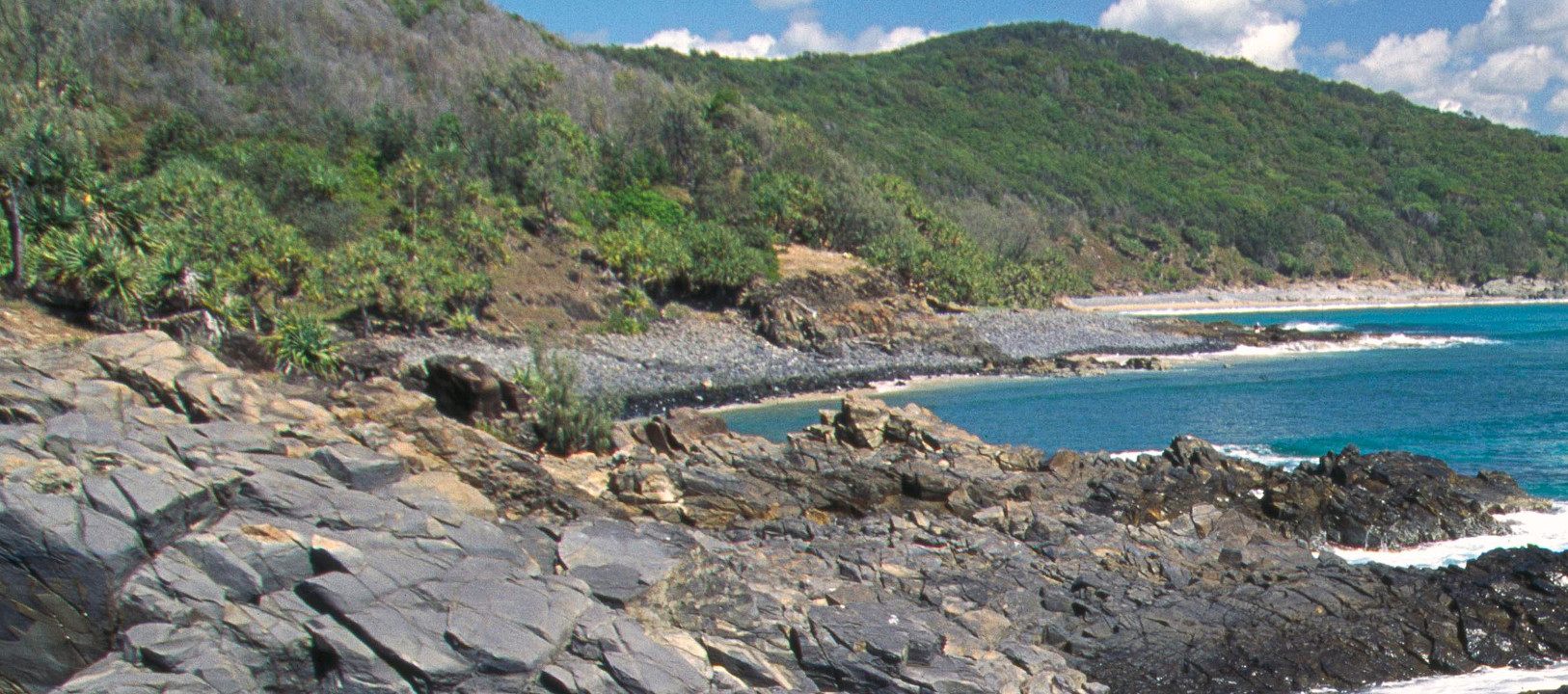|
|
Intertidal high energy over gravel, including cobbles and pebblesShort descriptionIntertidal high energy over gravel, including cobbles and pebbles. Disclaimer: Ecosystem type descriptions are based on biophysical attributes identified in Central Queensland through expert advice and supported by scientific literature. Not all ecosystem types are mapped based on current inventory, and many of the ecosystems described here may also occur in other parts of Queensland.
Classification categoriesSelect from the links below to view related ecosystem type categories Long descriptionIntertidal very high to moderate energy over gravel. Gravel is the collective term for unconsolidated particles between 265 and 2mm in diameter, including cobbles and pebbles, but excluding boulders in the scheme. Gravels can include mixtures of other particles (i.e. Sediment textures of muddy gravels, sandy gravels, and muddy sandy gravel) together with those composed of carbonate (e.g. coral rubble, coarse coral gravel, shells and shellgrit). Gravels can be of various Substrate compositions, such as terrigenous (i.e. fragments of decomposed rock) and carbonate (i.e. coarse shellgrits and coral rubble). Steep beaches of coarse gravels (i.e. shingle beaches) can form along coastlines where there are very high to medium energy boulders and rocky headlands (i.e. eroded off these areas) with or without fringing coral reefs. Typically where gravels experience high wave energy in shallower waters, they will be tumbled over each other, becoming abraded through mechanical action. Fragments are rolled around by wave action and thrown up by storm events. Gravel can be entrained in potholes, where abrasion is particularly pronounced[4]. Rubble consists of rough fragments of stone or debris, irrespective of its size, diameter or Substrate composition. Coral rubble results from coral reef structure that has died, broken or toppled from its growth position and fragmented. Wave action from storm events may transport the coral rubble from its original position to a different location, embedding it in dunes and re-working it over time to re-deposit it along the shoreline[3] (Wortel pers. comm.) or throwing it up onto coral cays. In the high wave action zone of coral reefs, crustose coralline algae may cement the rubble together, creating a consolidated surface for the settlement of coral larvae. Coral rubble comprises a significant proportion of much of the reef flat and islands of coral cays and is typically found forming shingle beds on shelf edge reefs especially those in high storm frequency environments[4]. There is no typical biota occurring on intertidal gravels, although as for consolidated ecosystem types, gravels are likely to have different biota according to their Substrate composition and mixtures of different Lithologies, and within the context of surrounding ecosystems. The cracks between the gravels and spaces below are also important habitat that are moist refuges for molluscs, crustaceans, ascidians, anemones and echinoderms[1]. Could provide habitat for encrusting biota (such as crustose coralline algae (CCA)) and infauna (such as polychaetes and burrowing bivalves). These and other structurally complex areas act as high tide refuges for fish, to protect them from predators, and fulfil a nursery role[2]. Many gravel ecosystems are yet to be surveyed for biota. Special valuesTypically high energy rubble beds and banks provide refuges for fauna (for example cowrie and cone shells on cobble beds in the lees of headlands or under coral rubble on high energy reef crests). Important to shorebird feeding, as outlined within the Aquatic Conservation Assessment (ACA). Many shorebirds are Environment Protection and Biodiversity Conservation Act 1999-listed (EPBC-listed) species. Diagnostic attributesInundation 'Intertidal – Lower low', 'Intertidal – Mid low', 'Intertidal – Upper low', 'Intertidal – Low undifferentiated', 'Intertidal – Lower medium', 'Intertidal – Upper-medium', 'Intertidal – Medium undifferentiated', 'Intertidal – High', 'Intertidal – Undifferentiated', 'Intertidal – High undifferentiated' Energy magnitude (wave) 'Very high', 'High', 'Medium' Sediment texture 'GRAVEL', 'muddy GRAVEL', 'sandy GRAVEL', 'muddy sandy GRAVEL' (note that the dominant grain size is capitalised) QualifiersPeriod and Trend are relevant as high energy gravels are subject to storm events and cyclones which can transport these sediments considerable distances, modifying shorelines and islands. DistributionCan occur up and down the Queensland coast on exposed coastlines adjacent to rocky headlands and coral reefs, but are more likely to occur on high wave energy shorelines from K'gari (Fraser Island) southwards to the NSW border. The following relates to distribution of this ecosystem type within the Central Queensland mapping area:
CommentsOnly Energy magnitude (wave) is mapped, but Energy magnitude from other sources including currents, riverine are also applicable, resulting in gravels of mixed lithology, composition and size sorting. Substrate composition may be relevant, as carbonate substrates such as shellgrit and coral rubble may provide substrates for the settlement of different biota. Additional InformationNatures Cement - A Tale of Two Dives (Khaled bin Sultan Living Oceans Foundation) References
Last updated: 18 July 2019 This page should be cited as: Department of Environment, Science and Innovation, Queensland (2019) Intertidal high energy over gravel, including cobbles and pebbles, WetlandInfo website, accessed 8 May 2025. Available at: https://wetlandinfo.des.qld.gov.au/wetlands/ecology/aquatic-ecosystems-natural/estuarine-marine/descriptions/32/ |

 — Department of the Environment, Tourism, Science and Innovation
— Department of the Environment, Tourism, Science and Innovation


